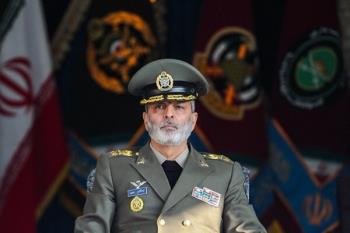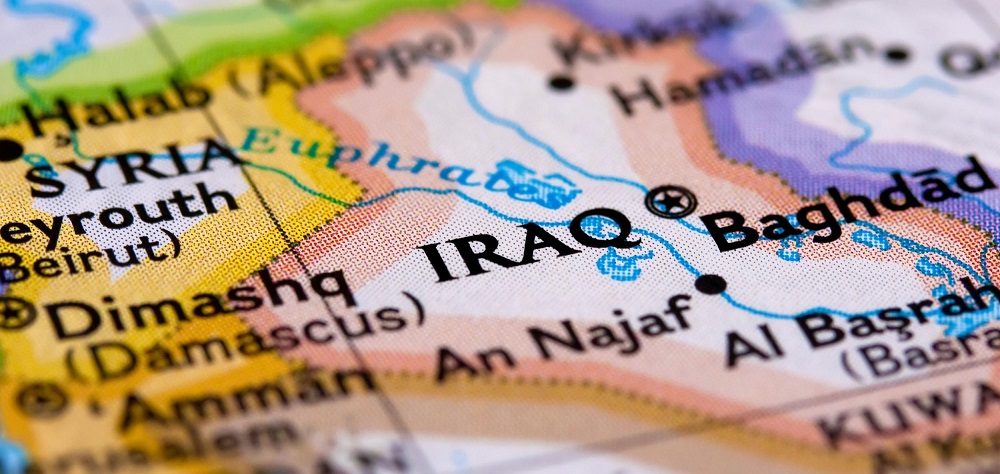Alwaght- Earlier this week, a documentary tilted the “The Religious Corruption in Iraq” was aired by Alhurra TV in Iraq, triggering public and political backlash as it directly targeted the top Shiite and Sunni figures of the country. The 25-minute film was announced to focus on religious corruption cases in the country.
It addressed the commercial projects around Shiite holy sites in the two cities of Karbala and Najaf and questioned them. The holy sites authorities have under development a wide range of tourism, health, education, and agricultural projects where thousands of employees are working. They are headed by the representative of grand Shiite cleric Sayyed Ali al-Sistani. The documentary also focuses on the Sunni awqaf investment projects headed by the senior Sunni cleric Abdulatif al-Humaim.
Although the Iraqi government suspended the US-funded network for three months, the question is that what is behind the offensive and false documentary? To get an answer to the question, the US strategy for cultural influence in Iraq should be brought in the spotlight. Here are some aspects of this strategy:
The main area of the US cultural influence attempt in Iraq is related to media where Washington works to damage the image of the religious icons and figures in the county. An investigation by Tabyin Center for Strategic Studies last year found that Alhurra network is fully US-funded. TCSS’s report reads: “The US media influence strategy is vast. One of the main institutions in the field is Broadcasting Board of Governors, now renamed to US Agency for Global Media. The BBG manifesto suggests that its mission is to inform, interact with the global public, and support democracy and freedom. One of the BBG’s wings is Middle East Broadcasting Networks that owns Alhurra network and Radio Sawa.” The two networks are broadcast in Arabic and are exclusively funded by Congress. Alhurra. The TV station recently covered a ceremony in which an Iraqi woman was rewarded by First Lady Melania Trump for her harboring of 15 Iraqi students from ISIS terrorists. This report and many others are used by Alhurra to introduce the US as the supporter of the Iraqis in the face of terrorism.
There is a point in this report, however: producing a program on the corruption of the religious institutions is not independent. Rather, it serves a broader agenda to secularize Iraq and create a tendency in the Iraqi society towards the Western culture, though the US more takes advantage of cultural and educational centers than media to spread secular culture.
Plans for cultural influence in academic and educational centers
Without any doubt, the US-related cultural and academic institutions represent a part of the American efforts to gain cultural depth in Iraq. According to the US agenda, the Iraqi higher education should go towards the democratization of the political system and modernization of society. The Iraqi universities are seen of potentials to help settle the political and social tensions. The higher education, the Americans think, can provide the students with opportunities to lead pro-change campaigns in the country. In their promotional reports, they suggest that despite the war in Iraq the educational and cultural centers have a role of leadership in guiding the nation to sustainable peace.
When the US invaded Iraq in 2003, the education sector was suffering from poor funding and organizational issues. After the invasion, it was assessed that the Iraqi education sector needed $1.2 billion, which was out of reach practically. Even Iraq reconstruction donation conference in Madrid in 2003 failed to allocate any budget to the education.
Still, while the economy was weak and the foreign aids were scanty, the US made observable moves to back the higher education sector. The US Agency for International Development (USAID) reported that establishing a partnership between the American and Iraqi higher education could cost $22 million. A set of universities like Jackson State University, University of Oklahoma, and the University of Hawaii System were partners to the program. Fullbright program granted scholarships to 36 Iraqi students in 2004 and 35 in 2005 in the American universities.
Moreover, the US State Department opened an online library for Iraq with American references. Opened up in 2006, the online library gave access to online publications for Iraqi academics, students, engineers, research centers, and the whole of government ministers.
Plans for secularism entrenchment in Iraq
Another face of the US cultural agenda in Iraq is the efforts to promote the US culture and secularism. Since the fall of Saddam Hussein, the United States Institute of Peace actively engaged in aids to the academic sector. The institute launched a program to ease ethnoreligious tensions and encourage democracy and stability, and in between, the sense of the need for the American military presence in Iraq.
The institute in March 2005 held a conference on “civic mission of Iraqi universities.” 30 Iraqi academics were invited to involve their universities in the case. Only in September 2005, the institute held 13 conferences in 12 Iraqi universities. The objective was to throw light on the new political system referendum. The academics presented their speeches on federalism, religion’s role in the government, and women’s role in the society of new Iraq. All of these efforts end in one aim: promotion of secularism and Western culture.
Focus on admitting and training Iraqi students
Iraqi students’ admission to the US universities makes up part of the American cultural influence in Iraq. The American admission of Iraqi students is meant to provide an instrument to train elites grown up with American and Western cultural values for future Iraq. The more Iraqi students are accepted in the American universities, the more secular and liberal elites are trained for future Iraq. Such a pro-Western community will pave the way for stable US-Iraqi relations. The admission to the US universities witnessed sharp increase especially after 2014, the year ISIS terrorists group rose in the country.
In 2008, Iraq and the US agreed on a strategic cooperation pact that intended to increase cultural interaction and cooperation in education and research. Since then, the number of Iraqi students studying in the US rose 429 percent. A majority of the students, nearly 77 percent, majored for MA, 14 percent for BA, and 9 percent for OPT degrees. According to Iraq’s higher education ministry, a majority of the Iraqi graduates, nearly 79 percent, in the US universities continue for Ph.D. degrees.
Before the fall of Saddam, the Iraqi students studying in the US universities were small in number as official figures suggest. After Saddam, every year they saw a record increase. Up to 2015, they reached 1727.



























